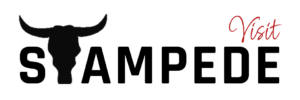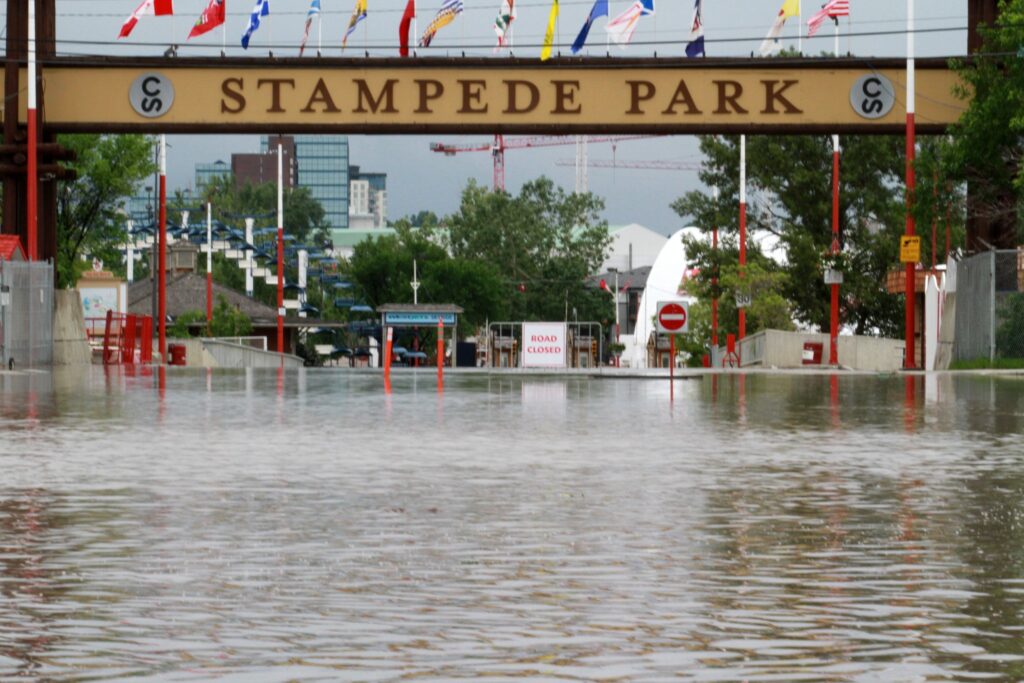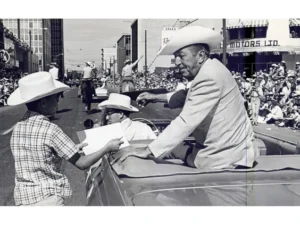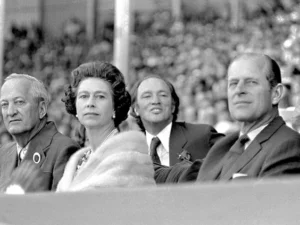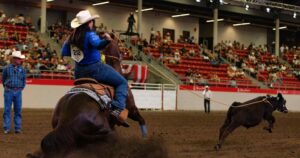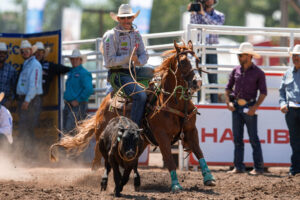Written by: Visit Calgary / Photo Credits: Fashion Magazine, LA Times, CBC
In June 2013, Calgary faced a disaster that would test the very fabric of its identity. A once-in-a-century flood submerged entire neighbourhoods, swept away homes, and turned the city’s heart into a waterlogged wasteland. Among the hardest-hit areas was the Stampede Grounds, where the Saddledome sat eerily silent beneath several feet of water, its seats drowned up to the eighth row. With just two weeks until opening day, hosting the Calgary Stampede seemed impossible. But for Calgary, the Stampede was more than an event—it was a symbol of resilience, Western heritage, and community spirit. And so, against all odds, the city vowed:
“Come Hell or High Water, the Show Will Go On.”
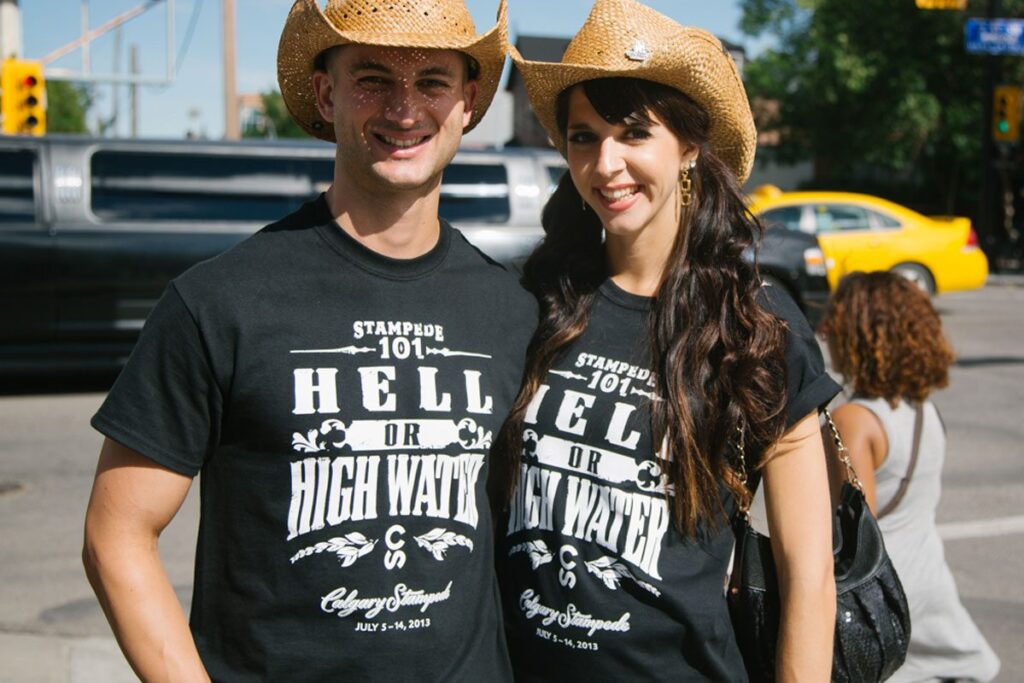
The Aftermath of the Flood: A City Underwater
As the floodwaters receded, the damage was staggering:
- Homes destroyed, businesses ruined, and streets covered in mud.
- The rodeo arena was a swamp, electrical systems were wrecked, and pathways buried in debris.
- Generators, equipment, and infrastructure lay in ruin.
Holding the Stampede under these conditions seemed unthinkable—but for Calgarians, giving up was never an option. The Stampede Board made a bold declaration:
✅ The 2013 Stampede would happen—no matter what.
This decision was met with skepticism—was it even possible? But for Calgary, this wasn’t just about a festival. It was about proving that even in disaster, their spirit could not be drowned.
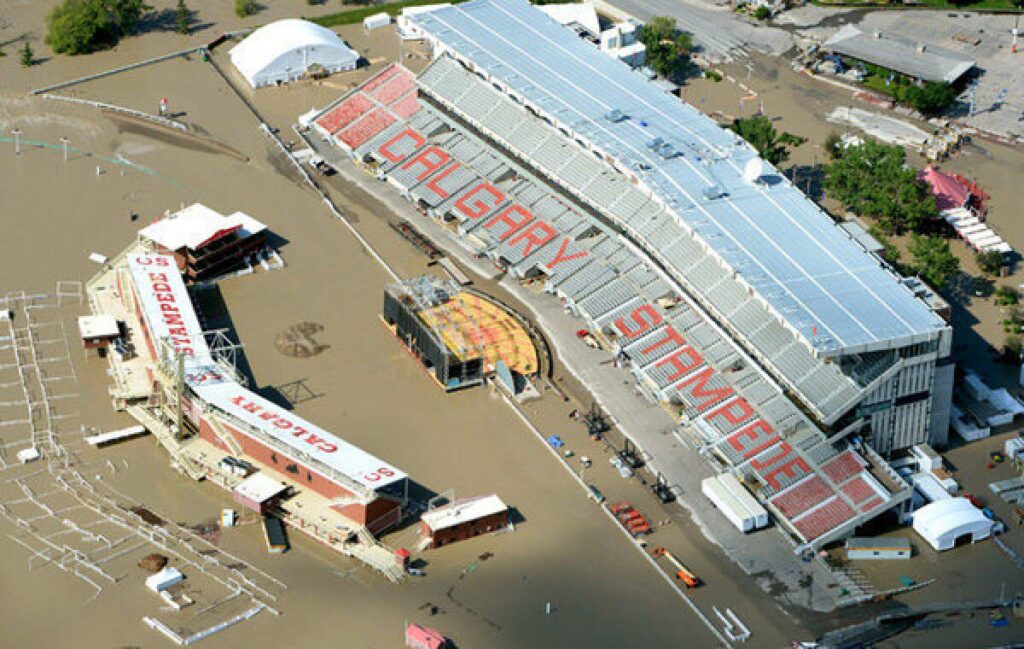
The People Who Made It Happen
While thousands of Calgarians were still dealing with personal loss, they rallied together to save the Stampede.
🏗️ Volunteers flooded the Stampede Grounds armed with shovels, buckets, and bare hands.
🔧 Electrical crews worked around the clock, sometimes knee-deep in water, to restore power.
🚜 Contractors donated equipment, businesses provided supplies, and people gave whatever they could.
Sacrifice and Unbreakable Resolve
For many, the sacrifices went beyond hard work:
- Volunteers left their flooded homes to work long hours, knowing they’d return to chaos at the end of the day.
- Parents brought their children to the Stampede Grounds, showing them what it meant to fight for something bigger.
- Local artists and musicians, even those who had lost equipment and venues, performed at the Stampede to raise funds for flood relief.
💡 The phrase “Come Hell or High Water” became a rallying cry—painted on signs, shirts, and etched into the hearts of every person who had a hand in the effort.
Opening Day: A Triumph of Spirit
On July 5, 2013, the Calgary Stampede opened its gates.
It wasn’t perfect—some attractions were scaled back, and the grounds still bore scars of the flood—but that didn’t matter. For the thousands who attended, the fact that it happened at all was a victory.
🏇 Rodeo riders competed on makeshift grounds, their performances infused with the same determination that rebuilt the park.
🎡 Volunteers walked the midway, exhausted but beaming with pride.
🎶 Laughter, music, and cheers filled the air, drowning out memories of the rushing waters.
💡 This Stampede wasn’t about entertainment. It was about resilience.
It was a declaration:
👉 “Calgary can be battered but not broken, flooded but not defeated.”
A Legacy of Hope and Strength
The 2013 Calgary Stampede became a defining moment in the city’s history.
✔️ “Come Hell or High Water” became more than a phrase—it became a movement.
✔️ Proceeds from T-shirts and memorabilia went toward flood relief efforts.
✔️ Calgary proved to the world—and to itself—that its spirit was indestructible.
🎡🤠 The Greatest Outdoor Show on Earth wasn’t just saved—it was redefined.
